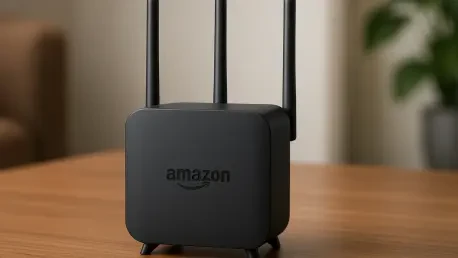An obscure but telling regulatory filing quietly shifted the race for space-based broadband, as Amazon’s rebranded low‑Earth‑orbit initiative, Amazon Leo, gained FCC equipment authorization for its Wi‑Fi router and signaled that the company’s ground gear had moved from lab stages toward commercial viability under real‑world constraints. That singular approval did not switch on service, but it unlocked a necessary gate for U.S. sales and, just as importantly, suggested marketing and operational timelines were converging with satellite deployment plans. The move arrived as Starlink pressed hard on price and coverage, reminding the market that speed to scale and cost discipline would define winners. Against that backdrop, the router’s authorization served as both a technical validation and a message: the customer experience layer—hardware, app, and support—was coming together even as constellation density still dictated the tempo.
Regulatory Milestone And Launch Signals
The FCC’s equipment authorization for the L1LA10 router gave Amazon Leo legal clearance to emit radio signals in the U.S., a baseline requirement before retail activity can begin and a common waypoint for communications gear approaching market. While routine on paper, the approval carried outsized weight in the LEO broadband sector, where companies often disclose little until launch. Here, the filing functioned as a verifiable breadcrumb that Amazon’s customer premises equipment was nearing readiness. Coupled with a standard 180‑day confidentiality request covering external photos, user documentation, and test setups, the authorization mapped neatly to a product ramp that aligns marketing reveal with supply chain timing and early service availability.
Those procedural steps also framed a narrower window for a multi‑market debut that had included the U.S. as an initial target, potentially as early as Q1, with activation hinging on available capacity rather than pure paperwork. In practice, firms in this category stage go‑to‑market plans around consecutive regulatory milestones, satellite launch cadence, and the buildout of ground infrastructure, and this case appeared no different. The approval underscored how authorizations have become proxy signals for launch proximity, especially when paired with confidentiality clocks that expire near expected reveals. For investors and competitors, the takeaway was clear: while coverage still depended on space‑side scale, the in‑home layer was being locked down for rollout.
Router Specs And Design
Technical details in the filing outlined a modern home and small‑business router that leaned on Wi‑Fi 6 with HE160 support, enabling wider channels and higher throughput when client devices and spectrum conditions allowed. The unit operated on 2.4GHz and 5GHz bands, eschewing the 6GHz band used by Wi‑Fi 6E, an omission that simplified RF design and client compatibility at the possible expense of uncongested airspace in dense environments. Mesh networking support suggested the router could extend coverage through satellite nodes across larger residences or offices, while Bluetooth Low Energy likely facilitated streamlined onboarding and integration with companion devices.
Notably, the paperwork specified indoor‑only use and no battery, pointing to a stationary gateway meant to pair with an outdoor terminal rather than a self‑contained mobile hotspot. References to a Kuiper‑branded app implied an app‑first setup flow that mirrored mainstream consumer networking experiences: scan a code, provision the system, join the network, and monitor link health. This split‑device architecture fit the broader Amazon Leo playbook: satellite terminals handle the sky link and tracking, and the router manages local distribution with consumer‑friendly controls. The approach favored predictability and serviceability, reducing support friction while preserving performance headroom for households and small offices.
Network, Pricing, And Ecosystem Strategy
The state of the constellation remained the gating factor. With just over 150 satellites on orbit, uninterrupted, ubiquitous coverage was not yet feasible, and meaningful expansion would be required to match the availability expectations set by entrenched rivals. Amazon’s pace of launches, ground station buildout, and spectrum coordination would directly shape early user experience, from session handoffs to throughput consistency. Until density improved, rollouts would likely emphasize specific regions and time windows where coverage could be sustained, a strategy that also created room to iterate on software‑defined scheduling and capacity management before scaling to mass adoption.
Competitive dynamics intensified the pressure to execute. Starlink’s recent promotions, including plans around $40 per month in some U.S. areas, reframed consumer expectations around affordability and flexibility, forcing any entrant to justify price with performance, reliability, or bundled value. Amazon telegraphed a focus on affordable, high‑speed, low‑latency service that extends beyond households to enterprises, critical infrastructure, and defense users. That breadth hinted at tiered offerings—consumer plans for reach, enterprise‑grade service with tighter SLAs, and government contracts for stability—underpinned by vertical integration. Satellites, terminals, router, and an app formed a cohesive stack, designed to limit variables, streamline support, and ensure that the end‑user experience matched the brand promise.
In that context, the router’s arrival rounded out the customer premises equipment suite that also included three planned terminals for portable, mainstream, and enterprise scenarios, giving solution architects more levers to balance cost, size, and performance. App‑centric management supported self‑installation at scale while enabling diagnostics, beam steering updates, and QoS tweaks without truck rolls. For adoption, near‑term steps were straightforward: accelerate launches to deepen coverage, freeze the retail and enterprise bundles that pair terminals with the new router, and calibrate pricing against regional elasticity. Done well, those moves positioned Amazon Leo to convert regulatory progress into service momentum, and they marked a decisive stride that had shifted attention from filings to execution.









